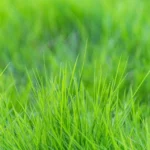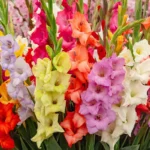
Bonsai trees are not just plants; they are living art forms that encapsulate centuries of tradition, skill, and philosophy. Originating from ancient China and later refined in Japan, the art of bonsai has captivated enthusiasts around the globe with its intricate techniques and profound connection to nature. Whether you are a seasoned bonsai cultivator or a curious beginner, understanding the fascinating world of bonsai can deepen your appreciation for these miniature masterpieces. In this blog, we will explore 25 intriguing facts about bonsai trees, from their unique styles and care requirements to their cultural significance and therapeutic benefits. Join us on this journey to discover the beauty and complexity of bonsai, and perhaps find inspiration to cultivate your own little piece of nature.
Origin: Bonsai originated in China over a thousand years ago, with its roots tracing back to the practice of growing miniature landscapes in shallow containers known as “penjing.” This technique was later adopted and refined in Japan, where it became known as bonsai. The art of bonsai emphasizes the aesthetic representation of nature and has evolved into a distinct cultural practice in Japan, gaining recognition and appreciation worldwide.
Meaning: The term “Bonsai” is derived from the Japanese words “bon,” meaning tray or shallow container, and “sai,” meaning planting. This definition reflects the fundamental aspect of bonsai cultivation: growing trees in pots or trays to create miniature versions of full-sized trees. The practice embodies the idea of nature in a small space, allowing enthusiasts to bring the beauty of nature into their homes.
Miniature Trees: Bonsai is not limited to a specific species of tree; rather, it is a horticultural practice that can be applied to many different tree species. Commonly used species include Ficus, Juniper, Pine, and Maple, but nearly any tree or shrub can be trained into a bonsai. The key is to select species that can tolerate pruning and shaping, allowing them to thrive in a confined space while maintaining their natural beauty.
Common Species: Among the most popular species for bonsai cultivation are Ficus, which are resilient and adaptable; Juniper, known for its hardy nature and beautiful foliage; Pine, which offers a classic look with its needles; and Maple, prized for its vibrant fall colors. Each species has its unique characteristics, growth habits, and care requirements, making the choice of species an essential consideration for bonsai enthusiasts.
Size: Bonsai trees can vary significantly in size, ranging from a few inches to several feet tall. The size is often categorized into classifications such as “mame” (very small, under 4 inches), “shohin” (small, 4-8 inches), “chuhin” (medium, 8-20 inches), and “dai” (large, over 20 inches). The size of the bonsai can influence its care and display, as smaller bonsai require more frequent watering and attention due to their limited soil volume.
Lifespan: Some bonsai trees can live for over a hundred years, with certain specimens believed to exceed a thousand years. This longevity is a result of careful cultivation, pruning, and maintenance practices that promote healthy growth and resilience. Many bonsai are passed down through generations, becoming cherished family heirlooms and symbols of patience and dedication in the art of bonsai cultivation.
Cultivation: Bonsai cultivation involves a variety of techniques, including pruning, wiring, and root reduction. Pruning is essential for controlling the size and shape of the tree, while wiring is used to guide the growth of branches into desired positions. Root reduction helps manage the tree’s size and health by preventing the roots from becoming too large for the pot. These techniques require skill and patience, as bonsai artists work to create a harmonious balance between the tree’s natural form and the constraints of its pot.
Potting: The pot used for bonsai is a critical element in the cultivation process. Bonsai pots are typically shallow and designed to provide adequate drainage while allowing for root development. The choice of pot should complement the tree’s aesthetics, with colors and shapes that enhance its appearance. Proper potting is essential for the health of the bonsai, as it affects water retention, nutrient availability, and overall growth.
Watering: Bonsai trees require careful attention to watering, as both over-watering and under-watering can lead to health issues. The frequency of watering depends on several factors, including the species, pot size, soil composition, and environmental conditions. Bonsai artists often check the soil moisture by touch, ensuring that it remains slightly damp but not soggy. Proper watering practices are crucial for maintaining the tree’s health and vitality.
Light Requirements: Most bonsai trees thrive in bright, indirect sunlight. While some species can tolerate direct sunlight, others may require protection from harsh afternoon rays. Providing the right amount of light is essential for photosynthesis, which supports healthy growth and vibrant foliage. Bonsai enthusiasts often place their trees near windows or in outdoor spaces where they can receive adequate light while being shielded from extreme conditions.
Soil: Bonsai soil is specially formulated to provide the right balance of drainage, aeration, and moisture retention. A common mix includes components like akadama (a clay-like granular soil), pumice (a lightweight volcanic rock), and lava rock, which together create an environment conducive to healthy root growth. The right soil mix is crucial for bonsai health, as it prevents root rot and allows for proper nutrient absorption while supporting the tree’s overall structure.
Training: Bonsai artists employ various training techniques to shape and direct the growth of branches. Wiring is one of the most common methods, where thin aluminum or copper wire is carefully wrapped around branches to guide their position as they grow. This process requires skill and patience, as the wire must be applied without damaging the bark. Training not only helps achieve the desired aesthetic but also encourages the tree to develop a more natural and balanced appearance over time.
Seasonal Care: Different seasons necessitate specific care routines for bonsai trees. In spring, when growth typically resumes, bonsai may need more frequent watering and fertilization. Summer may require additional attention to prevent overheating or drying out, especially for species sensitive to heat. In autumn, leaves may need to be pruned, and preparations should be made for winter, which may involve protecting the tree from frost and cold temperatures. Understanding seasonal changes is vital for maintaining the health and vitality of bonsai.
Display: The display of bonsai is an essential aspect of the art, as it enhances the visual appeal and allows for appreciation of the tree’s beauty. Bonsai are often showcased on stands or tables, with careful consideration given to their positioning, lighting, and surrounding elements. The display may include complementary items like stones, moss, or other plants to create a harmonious scene that reflects the natural environment. Proper display techniques can elevate the aesthetic experience and showcase the artistry of bonsai cultivation.
Cultural Significance: In Japanese culture, bonsai symbolizes harmony, peace, and balance. The practice is deeply rooted in Zen philosophy, reflecting the connection between nature and the human spirit. Bonsai cultivation is often seen as a meditative practice, promoting mindfulness and patience. The art form has transcended cultural boundaries, with enthusiasts around the world appreciating its beauty and the philosophy behind it, making bonsai a universal symbol of tranquility and artistry.
Art Form: Bonsai is considered a living art form that requires a unique blend of horticultural knowledge, creativity, and patience. The process of cultivating bonsai involves not only technical skills but also an artistic vision to create a miniature representation of nature. Artists must understand the growth patterns of their chosen species and how to manipulate them to achieve their desired aesthetic. The result is a dynamic work of art that evolves over time, reflecting the care and dedication of the artist.
Exhibitions: Bonsai exhibitions are held worldwide, showcasing the artistry and craftsmanship of bonsai cultivation. These events often feature a wide range of bonsai styles and species, allowing enthusiasts to appreciate the diversity and creativity within the art form. Exhibitions provide opportunities for artists to share their work, exchange techniques, and connect with fellow bonsai lovers. They also serve as a platform for education, where visitors can learn about the history, care, and cultural significance of bonsai.
Propagation: Bonsai can be propagated through several methods, including seeds, cuttings, and layering. Seed propagation involves planting seeds and nurturing them until they develop into young trees, which can then be shaped into bonsai. Cuttings involve taking a section of a branch and encouraging it to root in soil or water. Layering is a technique where a branch is partially buried in soil while still attached to the parent tree, allowing it to develop roots before being separated. Each method has its advantages and challenges, requiring different levels of skill and patience.
Pests: Common pests that can affect bonsai trees include aphids, spider mites, and scale insects. These pests can cause damage by feeding on the tree’s sap, leading to weakened growth and potential disease. Regular inspection and maintenance are crucial for preventing infestations. Organic pest control methods, such as insecticidal soap or neem oil, can be effective in managing pests while minimizing harm to the tree and the environment. Maintaining a healthy bonsai through proper care can also enhance its resistance to pests.
Fertilization: Regular fertilization is essential for the health of bonsai trees, particularly during the growing season. Bonsai soil can become depleted of nutrients over time, necessitating the addition of fertilizers to support growth. Fertilizers can come in various forms, including liquid, granular, or organic options. It’s important to choose a fertilizer that matches the specific needs of the bonsai species being cultivated. Typically, a balanced fertilizer with equal parts nitrogen, phosphorus, and potassium is recommended, but the ratios may vary depending on the tree’s growth stage and health. Fertilization should be done according to the tree’s needs, with adjustments made based on seasonal growth patterns. Proper fertilization not only promotes healthy foliage and root development but also enhances the overall vitality and resilience of the bonsai.
Repotting: Bonsai trees require repotting every couple of years, typically every two to three years, depending on the species and growth rate. This process is essential for refreshing the soil, which can become depleted of nutrients over time, and for managing root growth. When the roots become pot-bound, they can restrict the tree’s growth and health. During repotting, the bonsai enthusiast carefully removes the tree from its pot, trims back any overly long roots, and replaces the old soil with fresh, nutrient-rich bonsai soil that promotes drainage and aeration. This practice not only supports the tree’s vitality but also allows for the shaping and styling of the roots, which is an integral part of bonsai cultivation.
Styles: Bonsai trees are cultivated in various artistic styles, with each style reflecting different natural forms found in nature. Some of the most recognized styles include the formal upright (Chokkan), which features a straight trunk and symmetrical branches, and the informal upright (Moyogi), characterized by a trunk that curves gracefully. The cascading style (Kengai) showcases a tree that appears to grow downwards, mimicking trees that grow on steep cliffs. Other styles include the semi-cascade (Han-kengai), which is similar to cascading but not as extreme, and the forest style (Yose-ue), where multiple trees are planted together to create a natural-looking grove. Each style requires specific techniques in pruning and wiring to achieve the desired aesthetic and is often influenced by the natural environment from which the species originates.
Age Indicators: The age of a bonsai tree can often be estimated by examining the thickness of its trunk and the complexity of its branches. A thicker trunk generally indicates a more mature tree, as it takes years for a tree to develop a robust trunk. Additionally, the branching structure provides clues to the tree’s age; more intricate and well-developed branches suggest that the tree has been cared for over a longer period. Enthusiasts often look for signs of aging such as bark texture, which becomes more rugged and fissured with time, and the development of nebari, or surface roots, which can also indicate maturity. While the exact age can be difficult to determine without precise records, these physical characteristics allow bonsai practitioners to appreciate the history and growth journey of their trees. In some cases, bonsai trees can be several decades old, with some specimens even surpassing a century, making them not only plants but living pieces of art and history.
Bonsai Clubs: Around the world, there are numerous bonsai clubs and societies dedicated to the art of bonsai cultivation. These clubs provide a platform for enthusiasts—from beginners to advanced practitioners—to share knowledge, techniques, and experiences related to bonsai care and styling. Members often organize workshops, demonstrations, and exhibitions, fostering a community spirit and encouraging the exchange of ideas. Participating in a bonsai club can enhance one’s skills through hands-on learning and mentorship from more experienced members. Additionally, these clubs often host competitions and events that celebrate the artistry of bonsai, allowing members to showcase their work and gain recognition within the bonsai community.
Therapeutic Benefits: Caring for bonsai trees offers several therapeutic benefits, promoting relaxation and mindfulness among enthusiasts. The practice of tending to a bonsai requires patience and attention to detail, which can help individuals focus their minds and reduce stress. The repetitive actions of pruning, watering, and wiring can be meditative, allowing practitioners to connect with nature and find tranquility in their daily routines. Furthermore, the nurturing aspect of bonsai cultivation fosters a sense of responsibility and accomplishment, as caretakers witness the growth and transformation of their trees over time. Many people find that engaging in this art form not only enhances their appreciation for nature but also contributes positively to their overall mental well-being.
Here are some common FAQs about Bonsai Trees and their answers:
General Questions
1. What is a Bonsai Tree?
A Bonsai tree is a miniature tree grown in a container and trained to stay small through techniques like pruning, wiring, and root pruning. The word “Bonsai” is derived from the Japanese words “bon” meaning “tray” and “sai” meaning “planting.”
2. How long does it take to grow a Bonsai Tree?
The time it takes to grow a Bonsai can vary greatly depending on the species and the desired style. Some species, like Juniper and Pine, can take several years to develop into a mature Bonsai. However, with proper care and techniques, you can start shaping a young tree into a Bonsai within a few years.
3. Can I grow a Bonsai Tree indoors?
Many Bonsai species can be grown indoors, especially tropical and subtropical varieties like Ficus and Carmona. However, it’s important to provide them with adequate light, humidity, and temperature conditions. Outdoor Bonsai, on the other hand, require exposure to natural elements to thrive.
Care and Maintenance
4. How often should I water my Bonsai Tree?
The frequency of watering depends on factors like the species, pot size, soil type, and environmental conditions. As a general rule, water your Bonsai when the top inch of soil feels dry. Avoid overwatering, as it can lead to root rot.
5. What kind of soil is best for Bonsai Trees?
Bonsai trees thrive in well-draining soil mixes. A common mix includes akadama, pumice, and lava rock. This mixture provides excellent drainage and aeration for the roots.
6. How often should I fertilize my Bonsai Tree?
Fertilizing your Bonsai is crucial for its health and growth. Use a balanced liquid fertilizer diluted to half strength during the growing season (spring and summer). Reduce fertilization in autumn and winter.
7. How do I prune my Bonsai Tree?
Pruning is essential to maintain the desired shape and size of your Bonsai. Pinch new growth to encourage branching and shape the tree. Use pruning shears to remove unwanted branches and maintain the overall design.
8. What is wiring a Bonsai Tree?
Wiring is a technique used to bend and shape branches and trunks. Soft copper or aluminum wire is wrapped around the branches and gently manipulated to achieve the desired shape. It’s important to remove the wire before it cuts into the bark.
Bonsai Styles
9. What are the different styles of Bonsai?
There are numerous Bonsai styles, each with its unique characteristics:
- Formal Upright (Chokkan): A single, straight trunk with symmetrical branching.
- Informal Upright (Moyogi): A single, curved trunk with asymmetrical branching.
- Slanting (Shakan): A single trunk leaning at an angle.
- Literati (Bunjingi): A slender, elegant style with a long, winding trunk and sparse branching.
- Cascade (Kengai): A tree cascading over the pot’s edge.
- Semi-Cascade (Han-Kengai): A tree cascading partway over the pot’s edge.
- Broom (Hokidachi): A tree with a dense, upright growth habit and many branches radiating from a single point.
- Forest (Yose-Ue): A grouping of several trees planted together to create a forest-like scene.
- Raft (Ikadabuki): A tree with multiple trunks emerging from a single root system.
By understanding these FAQs and incorporating the tips provided, you can successfully cultivate and enjoy your Bonsai trees.









